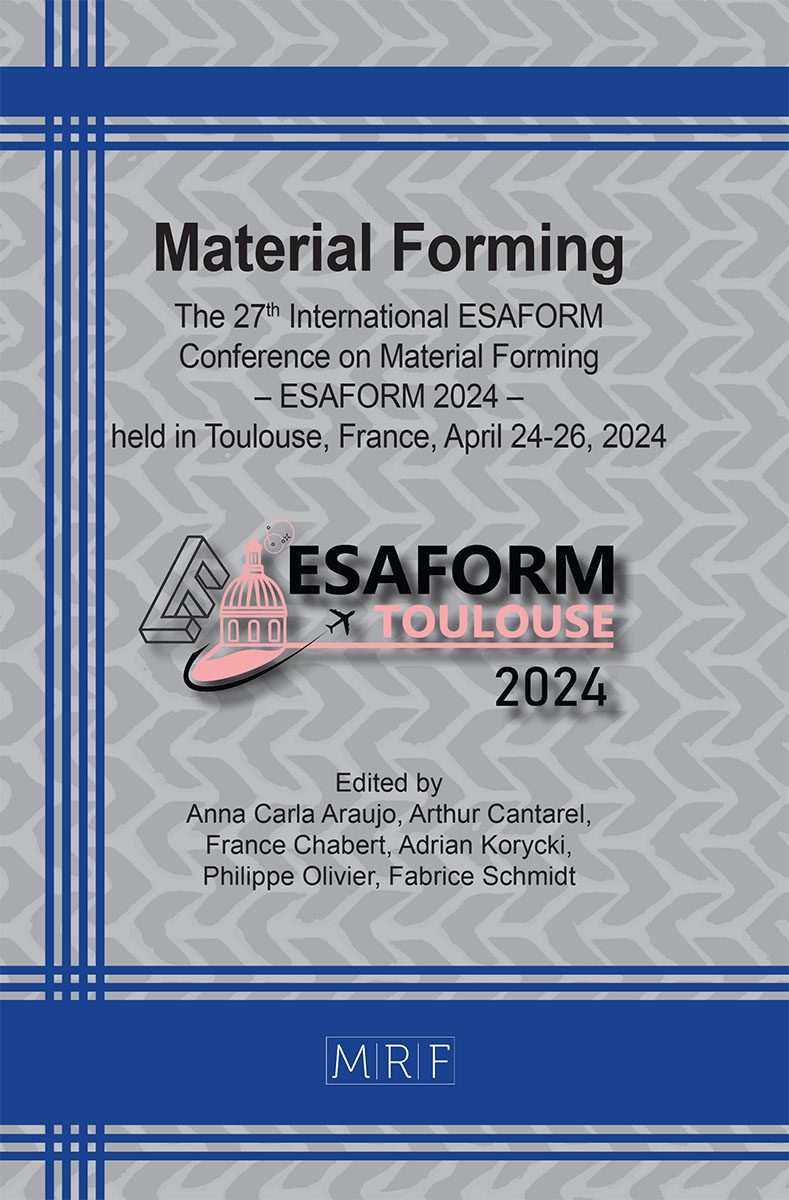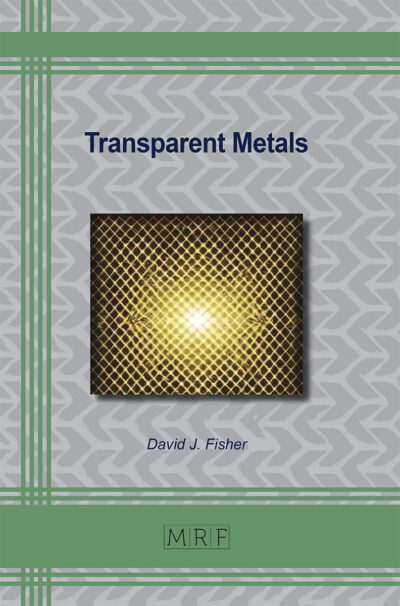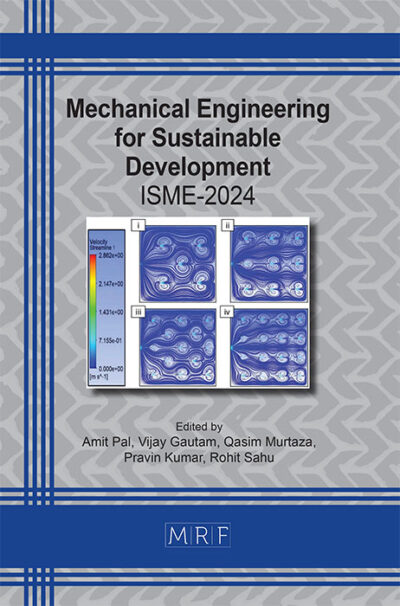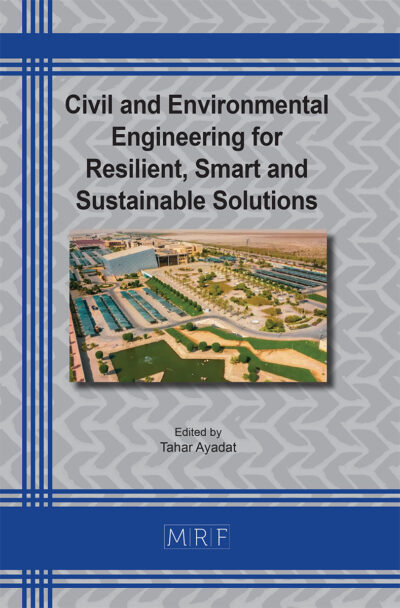–
Development of novel composites of incompatible barrier polymers and their optimal processing conditions for recyclable thermoformable food packaging sheet
AKIKI Alain, EL RASSY Elissa, CHALLITA Georges, NACCOUL Rouaida Abou, BAILLEUL Jean-Luc
download PDFAbstract. In this work, a high barrier polymer MXD6 (m-xylene diamine) has been incorporated in a PE (polyethylene) matrix to create an extensible, thermoplastic composite system. MXD6 is a high barrier and glassy polymer. However, being polar, it is incompatible with a non-polar PE. To this date, there were no significant attempts neither in compatibilizing a binary blend of PE/MXD6 nor in exploring the benefits of orientation on such a mixed system. The main value proposition in this work resides in reducing the dispersed MXD6 phase close to a submicron scale in the PE matrix by designing an adequate mixing process/compatibilizer method. Thermal characterization of the composites and the scanning electron microscopy have confirmed that the MXD6 dispersed phase in the compatibilized blends has been physically and thermally confined; its crystallization during cooling stage has been inhibited. The compatibilized blend shows a creation of an interface adhesion between phases. The dispersed phase average particle size is stabilized at around 0.5 μm enhancing the recyclability of the final product.
Keywords
Dispersed Nanophase, MXD6, Compatibilizer, Thermoplastic Composite, Laminar Morphology, Permeability
Published online 4/24/2024, 10 pages
Copyright © 2024 by the author(s)
Published under license by Materials Research Forum LLC., Millersville PA, USA
Citation: AKIKI Alain, EL RASSY Elissa, CHALLITA Georges, NACCOUL Rouaida Abou, BAILLEUL Jean-Luc, Development of novel composites of incompatible barrier polymers and their optimal processing conditions for recyclable thermoformable food packaging sheet, Materials Research Proceedings, Vol. 41, pp 2628-2637, 2024
DOI: https://doi.org/10.21741/9781644903131-288
The article was published as article 288 of the book Material Forming
![]() Content from this work may be used under the terms of the Creative Commons Attribution 3.0 license. Any further distribution of this work must maintain attribution to the author(s) and the title of the work, journal citation and DOI.
Content from this work may be used under the terms of the Creative Commons Attribution 3.0 license. Any further distribution of this work must maintain attribution to the author(s) and the title of the work, journal citation and DOI.
References
[1] J. Luna and A. Vílchez, “Polymer nanocomposites for food packaging,” Emerging Nanotechnologies in Food Science, pp. 119–147, 2017. https://doi.org/10.1016/B978-0-323-42980-1.00007-8
[2] H. Onyeaka, P. Passaretti, T. Miri, and Z. T. Al-Sharify, “The safety of nanomaterials in food production and packaging,” Current Research in Food Science, vol. 5, pp. 763–774, 2022. https://doi.org/10.1016/j.crfs.2022.04.005
[3] Fereydoon, M. (2014). Development of High Barrier Nylon Based Multilayer Films [Ph.D. thesis, École Polytechnique de Montréal]. PolyPublie.
[4] Seif, S. (2009). Temporally programmed stretching of polymer films: Influence of nanoparticles. The University of Akron.
[5] Arnal, M. L., Matos, M. E., Morales, R. A., Santana, O. O., & Müuller, A. J. (1998). Evaluation of the fractionated crystallization of dispersed polyolefins in a polystyrene matrix. Macromolecular Chemistry and Physics, 199(10), 2275-2288. https://doi.org/10.1002/(SICI)1521-3935(19981001)199:10<2275::AID-MACP2275>3.0.CO;2-#
[6] Sangroniz, L., Wang, B., Su, Y., Liu, G., Cavallo, D., Wang, D., & Müller, A. J. (2021). Fractionated crystallization in semicrystalline polymers. Progress in Polymer Science, 115, 101376. https://doi.org/10.1016/j.progpolymsci.2021.101376
[7] Mariangela Camargo, Maria Madalena Camargo Forte & Carlos Rodolfo Wolf (2008): Linear Low Density Polyethylene Thermal Fractionation by DSC Technique, International Journal of Polymer Analysis and Characterization, 13:1, 49-65. https://doi.org/10.1080/10236660701802593
[8] Kong, Y., & Hay, J. N. (2002). The measurement of the crystallinity of polymers by DSC. Polymer, 43(14), 3873-3878. https://doi.org/10.1016/S0032-3861(02)00235-5
[9] Doudou, B., Dargent, E., & Grenet, J. (2006). Crystallization and melting behaviour of poly (m-xylene adipamide). Journal of thermal analysis and calorimetry, 85(2), 409-415. https://doi.org/10.1007/s10973-005-7299-y
[10] Fortelný, I., & Jůza, J. (2021). The effects of copolymer compatibilizers on the phase structure evolution in polymer blends—a review. Materials, 14(24), 7786. https://doi.org/10.3390/ma14247786
[11] Araujo, J. R., Vallim, M. R., Spinacé, M. A. S., & De Paoli, M. A. (2008). Use of postconsumer polyethylene in blends with polyamide 6: effects of the extrusion method and the compatibilizer. Journal of applied polymer science, 110(3), 1310-1317. https://doi.org/10.1002/app.28441
[12] Chloé Épinat. Morphology development and rheological properties of reactively compatibilized Polyamide 6 / High Density Polyethylene blends. Material chemistry. Université Claude Bernard – Lyon I, 2014.
[13] Karakus, G., Polat, Z. A., Yenidunya, A. F., Zengin, H. B., & Karakus, C. B. (2013). Synthesis, characterization and cytotoxicity of novel modified poly [(maleic anhydride)‐co‐(vinyl acetate)]/noradrenaline conjugate. Polymer international, 62(3), 492-500. https://doi.org/10.1002/pi.4341












